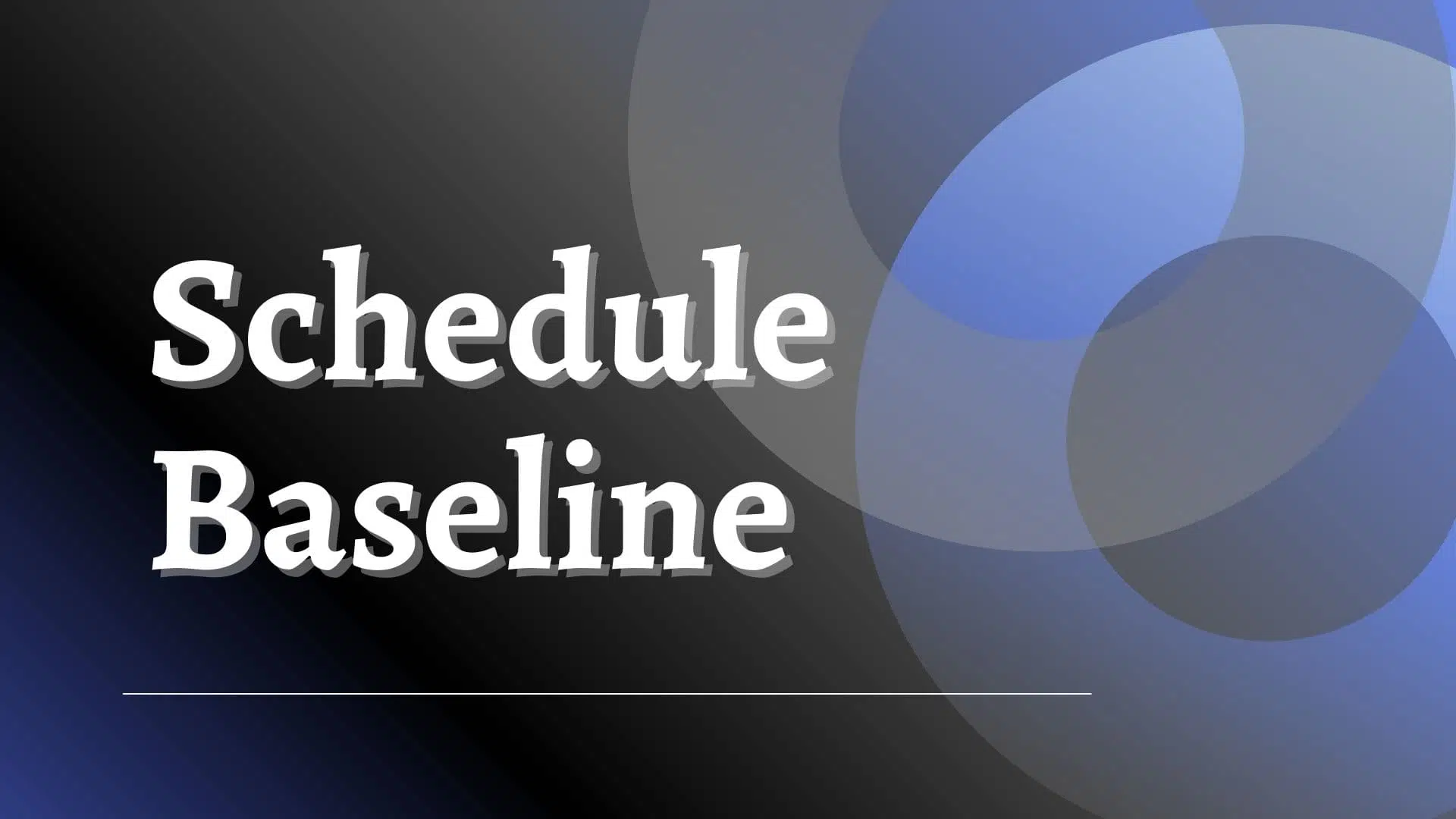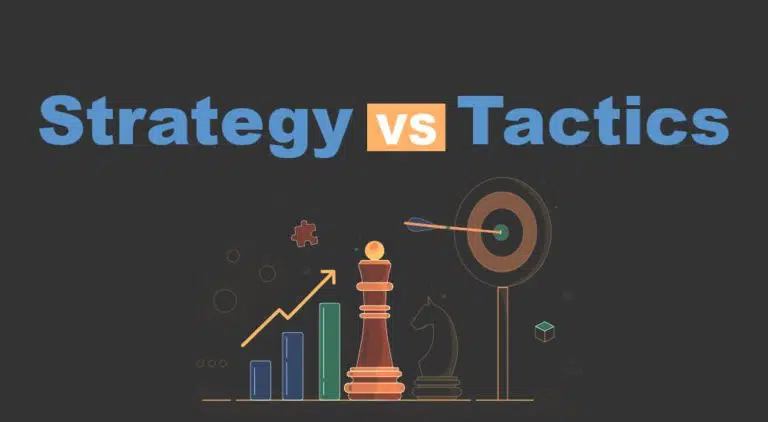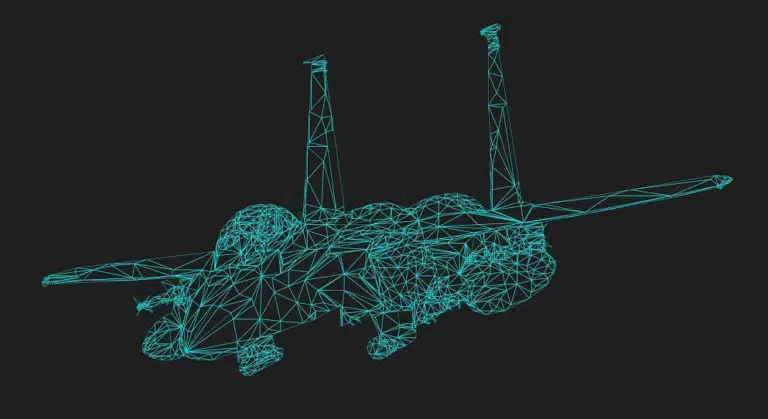Project managers use a schedule baseline to track the project’s progress and ensure all tasks are completed on time. Time management is vital in project management.
A schedule baseline is a key project document that project managers develop during the project planning as part of performance measurement baselines. It shows the duration of tasks, key milestones, critical path, deliverables, task dependence, etc.
Table of Contents
What is a Project Schedule Baseline?
The project schedule baseline is a key document in project management. This document outlines the planned start and end dates for each task, along with dependencies and milestones. It is a reference point for measuring and tracking project progress, deviations, and performance.
The PMI states, “A baseline is the approved version of a schedule model that can be changed using formal change control procedures and is used as the basis for comparison to actual results.”
The schedule baseline is a project performance baseline and one of three project baselines. The other performance baselines are “cost baseline” and “scope baseline.”
Project managers develop schedule baselines using graphical tools, which makes tracking easier. Stakeholders can visually see the progress and understand the issues. This baseline helps compare “where you should be” and “where you are.”
You can use the Gantt chart, critical path, critical chain, and Kanban board to develop your schedule baseline.
When I joined my first project, we developed the schedule baseline using an Excel table, which we used to measure the track with a line chart. The project was a simple construction project, and I used to enter the data in the Excel file and get the updated line chart showing the planned and current progress.
We used to submit the monthly report to the client, and based on this report, they used to release the payment.
You can break the project into a work breakdown structure and organize the tasks in a schedule baseline.
A project schedule baseline can have the following elements:
- A sequence of project activities
- Activity dependencies, including leads and lags
- Activity durations
- Resource requirements
- Planned start and completion dates of activities
- Assumptions and constraints
Using project management software, project managers create a baseline schedule. This scheduling model provides output in a diagram in your preferred format, such as a Gantt chart, network diagram, etc.
In project management, a baseline serves as a foundation for project planning. A project schedule includes all tasks a project manager must execute within a time range to complete the project.
When you compare the project’s current status to the baseline, you can find differences and take corrective action to get the project back on track.
Who Can Use a Project Schedule Baseline?
Every project, regardless of industry, uses a schedule baseline. It helps track progress and keeps people motivated and productive.
Schedule baselines are becoming less important in IT projects as a result of the adoption of Agile approaches. Agile projects do not have a precise scope of work upfront; hence, there is no schedule baseline.
You will need a well-defined scope of work with you to create a scheduling baseline.
What is the Importance of a Project Schedule Baseline?
A scheduling baseline is helpful for many reasons, such as:
Helps Avoid Conflicts
Conflicts are common in projects, and schedule priorities are the most common cause. A schedule baseline solves scheduling priority issues, resulting in fewer disputes on the project.
Documentation of an Approved Project Schedule
A baseline ensures stakeholders understand project objectives, including estimates, assumptions, restrictions, and dependencies. It keeps everyone on the same page, preventing misunderstandings.
A schedule baseline is essential to keep track of a project’s progress and results.
Provides Clarity
Project team members want clarity on roles and responsibilities, resource requirements, start and end dates, etc. The schedule baseline provides all this information, which enables work package owners to manage their tasks properly.
It also details the activity sequence, interdependencies, and assumptions of the activities.
Schedule Controlling and Performance Measurement
The baseline provides the basis against which the project performance is measured.
It helps measure the following:
- Performance evaluations include earned value analysis (earned value, planned value, actual cost)
- Variance analysis (using indicators such as schedule variation)
- Forecasting analysis (e.g., to-complete-performance index or TCPI)
- What if scenarios analysis (for risks)
These analyses reveal differences between the actual and planned performance. These differences are known as deviations and can cause you to update your schedule baseline.
Benefits of a Project Schedule Baseline
The benefits of the project schedule baseline are as follows:
- Earned value calculation
- Creating documentation for the approved scheduling model
- Facilitating milestone communication
- Increasing the precision of estimates
- Keeping a project team on track
- Monitoring and adjusting a schedule’s performance metrics
- Providing a foundation for cost estimates
- Providing a foundation for risk assessment.
How to Create a Project Schedule Baseline
You can use the following steps to develop your schedule baseline.
Determine Tasks
Using the scope of work, create a work breakdown structure. This ensures that no tasks are overlooked. The work package is the lowest level in the WBS. Afterward, define tasks and activities in detail for a realistic schedule.
Hold planning sessions with the stakeholders to ensure you don’t miss any crucial element. Examine your company’s process assets and previous similar project files.
Determine the Time Duration
Estimate the duration of the activities after they’ve been determined. You can use analogous, parametric, or bottom-up estimating techniques to estimate activity duration.
Milestones are intermediary points in projects. They indicate the end of one project phase and the beginning of the next, as well as key milestones.
Determine all project milestones.
Determine Dependencies
A project has dependent and independent activities. However, even the dependent activities may not start until a particular activity starts or any milestone is achieved. If these dependencies are not identified, you may face issues later in the project life cycle.
Find dependencies for every activity to develop a robust schedule baseline.
Assign Resources
Now, you will assign resources to activities. Resources can be materials, team members, tools, etc. Resource costs are linked with the duration of their use.
Establish a Baseline
You now have a project timeline. Once you get approval from the stakeholders, it will become a project schedule baseline.
Can You Change a Project Baseline?
Suppose a risk occurs and affects the project schedule baseline. In this situation, a project manager submits a change request, and if it is approved, the project manager will update the schedule baseline.
Not all deviations change the schedule baseline. The change is implemented according to the criteria outlined in the change management procedure.
Schedule forecasting is a method of estimating the future performance of a schedule baseline using work performance data. This allows the project baseline to be updated in advance for later stages.
When Should You Change the Schedule Baseline?
In three cases, you can update the schedule baseline:
- Suppose the scheduling baseline is created using a progressive elaboration method. Here, near-term activities are planned in detail, whereas distant activities are added based on predictions. Project managers change the timetable as information gets updated.
- Suppose a risk occurs and consumes all schedule contingencies, or any unidentified risk occurs and affects the schedule baseline. In that case, you will request a change to update the schedule baseline. Once the request is approved, you will update the baseline.
- If a client requests changes in scope, you will review the impact of scope changes on the schedule baseline. If it affects the schedule, you will update the schedule baseline.
Problems Caused by Not Having a Project Baseline
Not having a schedule baseline can cause the following issues:
- Insufficient resource planning
- Schedule delays
- Quality management issues
- Change management issues
- Dissatisfaction among stakeholders
- Poor progress and performance reporting
Difference Between a Project Schedule and a Project Schedule Baseline
The difference between project schedule and schedule baseline are as follows:
- The schedule baseline is an “approved” version of the project schedule.
- The project schedule is a living document, and the schedule baseline is frozen.
- The project schedule would get updated as the project progresses, whereas the schedule baseline is modified only when there is an approved change request.
- Schedule performance can be measured by comparing the actual (project schedule) with the baseline (schedule baseline).
- The project schedule and schedule baseline are the same at the beginning of the project. The actual progress of the work done is updated on the project schedule. The latest version of the actual schedule is called the project schedule.
Example of a Project Schedule Baseline
Use this example to understand how one step of a finished project schedule baseline document may appear in practice:
Project name: Steel Framed City Mall Construction.
Project manager: John Doe
Start date: May 22, 2022
End date: August 22, 2022
Timeline
Start date: May 22, 2022
End date: August 22, 2022
Duration (In days): 90
Schedule
Lay the foundation > Complete wall framing > Install rough plumbing, electrical and Insulation for HVAC systems > Finish drywall installation > Supply and install fixtures > Complete interior finishes > Fix and finish doorways > Install flooring > Install countertops > Finish mechanical installation > External finishes.
Budget: 400,000 USD
Resources
- A team of 20 people
- Concrete
- Insulated cables
- Timber
- Flooring
- Piping
- Granite Countertops
- Plasterboard
Risks
Delayed shipment for countertops
Issues
No issues currently
Comments
Countertops must be ordered earlier to minimize the delay.
Conclusion
The project schedule baseline serves as a benchmark for measuring project performance. It simplifies a lengthy schedule into a comprehensible and measurable timeline for all project activities. This helps project managers manage activities and complete projects on time.
This topic is important from a PMP exam point of view.

I am Mohammad Fahad Usmani, B.E. PMP, PMI-RMP. I have been blogging on project management topics since 2011. To date, thousands of professionals have passed the PMP exam using my resources.







